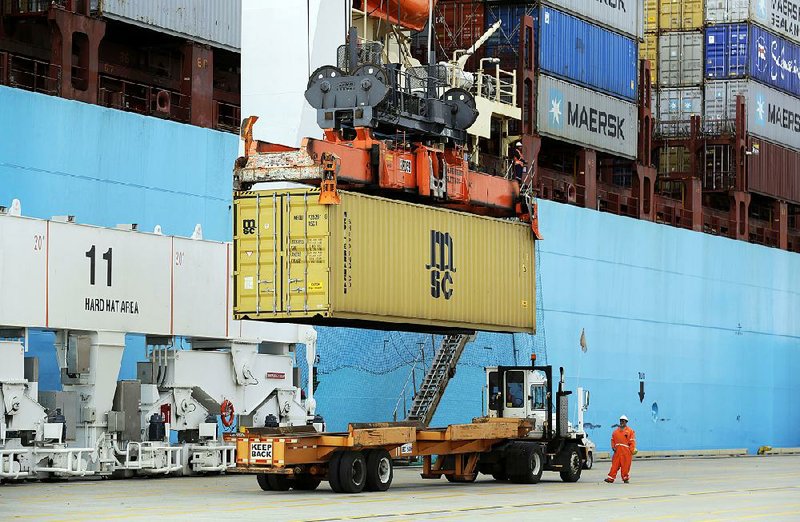WASHINGTON -- The U.S. trade deficit narrowed in May as a rebound in global growth increased foreign demand for U.S. exports of automobiles, consumer products and other goods and services to their highest level in more than two years.
The trade deficit, the gap between U.S. imports and exports of goods and services, fell to $46.5 billion, falling $1.1 billion from the previous month, data released Thursday morning by the Commerce Department showed.
U.S. exports rose 0.4 percent to $192 billion, evidence of a rebound in global trade, while imports declined just 0.1 percent to $238.5 billion.
"Trade is back," Chris Rupkey, chief financial economist at MUFG Union Bank, wrote in an email to clients.
Yet while the U.S. trade balance fell in May, it is on pace to be larger this year than last. In the first five months of 2017, the trade balance came to $233 billion, compared with $206 billion in the first five months of 2016.
Even in some countries whose trade practice Trump has specifically criticized, the imbalance continues to grow. The U.S. trade deficit with Canada has widened by $7.7 billion this year, while the trade deficit with Mexico has grown by $3.8 billion, Fotios Raptis, an analyst at TD Economics, said in a note Thursday.
Trade deficits with Europe and China have also widened, as a stronger U.S. economy increased demand for imports.
That will likely come as unwelcome news to the Trump administration, which has persistently criticized the trade deficit as evidence that other countries are taking advantage of the United States.
Economists generally caution against these views, arguing that, while a persistent trade deficit can be a troubling sign, trade balances can fluctuate for all kinds of reasons, including the value of relative currencies, the strength of economies and international investment flows.
For example, imports sometimes rise when the U.S. economy is doing well and Americans can better afford products from abroad. A strong U.S. economy also tends to push up the value of the U.S. dollar, causing exports to fall.
President Donald Trump issued an executive order on March 31 calling for the Commerce Department to prepare a report within 90 days on the bilateral trade deficits the United States maintains with other countries. That time frame would have called for the report to be issued by June 29, but it has yet to be released.
The Trump administration also is preparing to renegotiate the North American Free Trade Agreement with Canada and Mexico to overhaul a trade pact he has called a "disaster" for American workers.
Information for this article was contributed by Paul Wiseman of The Associated Press.
Business on 07/07/2017

